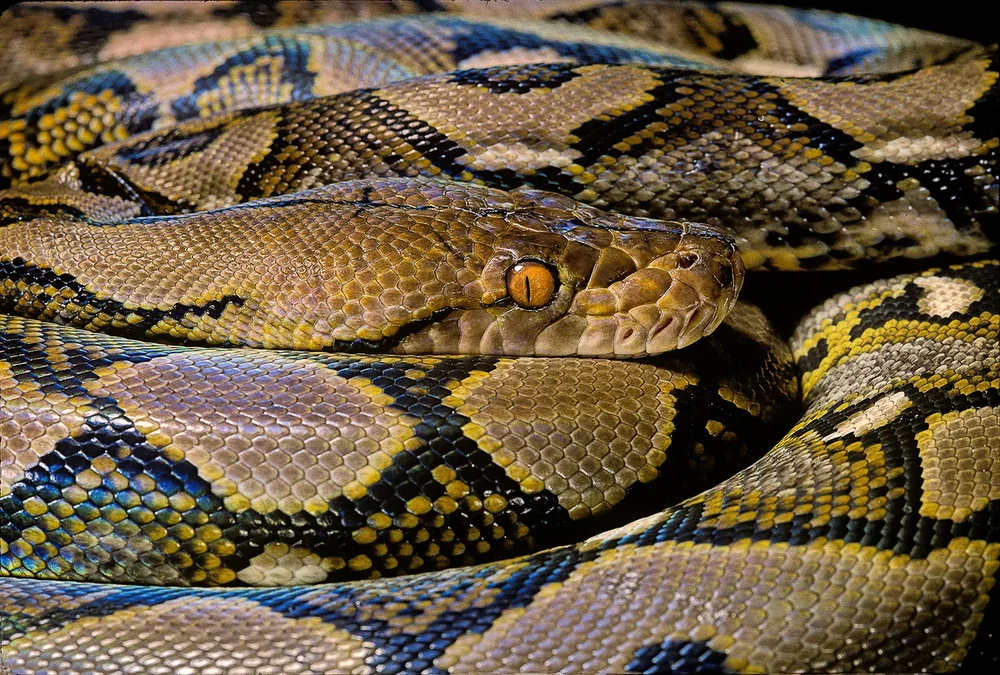-
Posts
4,412 -
Joined
-
Last visited
-
Days Won
1
Content Type
Profiles
Forums
Blogs
Events
Posts posted by Freee!!
-
-
6 hours ago, KWA said:
There have been reports all the lights on board went out
Visible in the video in the first post.
6 hours ago, KWA said:and they reported loss of propulsion a few minutes before the collision.
And the rudder isn't mechanically connected to the steering wheel either anymore.
-
 2
2
-
-
:no_upscale():strip_icc():fill(white):strip_exif()/f/image/TpjKNTB8JifPWNM0SFYwZwj0.jpg?f=user_large)
-
 1
1
-
 1
1
-
-
-
-
-

-
 3
3
-
 1
1
-
-
Ii don't hate nationalities, but I try to make sure I know the best, descriptive insults in the various languages to get my point across.
"Nye kultoornii" (uncultured/uncivilized) works nicely on ruSSians.
-
 2
2
-
 2
2
-
 1
1
-
-
17 hours ago, DeuceSixs said:
Just because they say it is supposed to be , doesn’t mean it will be enforced, many so called laws have never been enforced, the mighty dollar dictates that
I'd say the mighty Baht does.
-
 1
1
-
-
-
-
On 8/25/2022 at 9:19 AM, KWA said:
Whatever airline I'm flying with.
And airports I am likely to land at/depart from if they have a good app. The Schiphol app is permanently installed as it also comes in handy when picking up somebody from there.
-
 1
1
-
-
- Popular Post
- Popular Post
:strip_exif()/f/image/BI4ijf6XrS5Aa3QTi8eJHBha.webp?f=fotoalbum_large)
-
 9
9
-
15 minutes ago, fygjam said:
If you get the nitrogen for free, no problem.
If you pay for it, sucker, I've got a bridge for sale.
https://autoexpert.com.au/posts/top-10-reasons-why-nitrogen-wont-help-your-tyres
Plus many more, even from tyre manufacturers.
You are correct that it isn't worth paying (much) for, most advantages are negligible. However, the advantages are significant enough in aviation that nitrogen is the standard.
-
 2
2
-
 1
1
-
-
5 minutes ago, Yessongs said:
[...]
One other thing, I MUST be the Village Idiot here, they now put “Nitrogen” in your tires as an upside, instead of regular air?? Yep…..the tech ( who was cool, pic included) hands me his Samsung Galaxy phone, says something in Thai, it translates to English and that’s what it said…..what ever LOL!
Nitrogen in the tires has some advantages over regular air (which already is about 80% nitrogen). There is a distinct lack of oxygen (about 20% in regular air), which has a tendency to oxidize the rubber of your tires, especially at higher temperatures. There is also a distinct lack of water vapor, which can cause pressure fluctuations by condensating and evaporating.
-
 1
1
-
 4
4
-
 1
1
-
-
-
:strip_exif()/f/image/IpAEIaUpNCgscPLlqjql0Q8p.jpg?f=fotoalbum_large)
-
 1
1
-
 4
4
-
-
:no_upscale():strip_icc():fill(white):strip_exif()/f/image/aAECcYTs9sBC0Aqug9fxFXQk.jpg?f=user_large)
-
 1
1
-
 1
1
-
-
1 hour ago, ChiFlyer said:
[...]
In the event that I am not happy with the end product, I will not refill the water and look for someone to try the
@forcebwithu 's muriatic acid solution treatment.After which the grouting will need to be redone. I would first go with a slightly higher concentration of acetic acid than vinegar provides.
-
 1
1
-
-
16 minutes ago, lazarus said:
Thais have been on to this for many centuries...
gnoo krapow
. . .
Snake Steak Could Be a Climate-Friendly Source of Protein
Pythons turn their food into meat pretty efficiently, a study finds, making them an intriguing alternative to climate-unfriendly cows
Put aside your chicken cutlets and meatloaf and say hello to python curries and satay skewers. Some snake scientists think eating these reptiles—already customary or at least acceptable in parts of the world—might help lessen the damage our food choices have on the environment.
With some eight billion people on the planet today, all of whom require protein to stay healthy, finding new sources of these nutrients is a crucial issue. “The general conundrum we somehow need to solve is: Where do we get the appropriate amounts of protein for a still-growing global population without the big environmental footprint?” says Monika Zurek, a food systems scientist at the University of Oxford, who was not involved in the new research. Humans’ dietary staples, particularly those of Westerners, have serious consequences. The environmental impacts of cattle products such as beef are especially costly: the animals produce nearly 10 percent of the world’s greenhouse gas emissions, and growing food for them spurs deforestation. Pork brings a separate set of environmental hazards, notably water pollution from pig waste. The chicken industry faces similar issues.
But how do you get from the challenge of providing sufficient protein to farming pythons for meat? For Dan Natusch, a herpetologist at Macquarie University in Australia, the idea came about tangentially. He and his colleagues were working with existing commercial python farms in Vietnam and Thailand to determine whether they could distinguish wild-bred snakes from captive-bred ones. During the study, the researchers noticed the farmed pythons’ propensity for speedy growth, which they’ve documented in research published in Scientific Reports on March 14.“As snake biologists, we already knew that pythons had impressive physiologies,” Natusch says. “After speaking with the python farmers and continuing to monitor their growth rates, their remarkable physiologies became even more apparent.”Part of the explanation boils down to biology. Pythons, like all snakes, are ectotherms, or cold-blooded animals, which means their body temperature is controlled by their surroundings. This lifestyle makes snakes prone to sunbathing, but it also means that, unlike mammals, ectotherms don’t need to produce heat to keep themselves warm—a major source of energy savings that allows them to efficiently convert food into body mass.Natusch and his colleagues decided to quantify that efficiency. The team studied reticulated pythons (Malayopython reticulatus) and Burmese pythons (Python bivittatus) on the farms, analyzing what they ate and how quickly they grew.In particular, the researchers were struck by the pythons’ resilience during long fasts: the animals sometimes went months without eating but also without losing much weight. “Observing the ability of relatively young snakes to go many months without food and remain in a healthy state with minimal loss of body condition was really astounding,” Natusch says. Notably, he and his colleagues think that such resilience could be valuable during a major disruption to the food system, such as what occurred during the early days of the COVID pandemic, when some farmers couldn’t afford to keep feeding their livestock but also couldn’t get them to processors.“Because we expect even greater global economic and climatic volatility in [the] future, pythons could be a solution for those future challenges,” Natusch says. “Farming pythons could be a big part of the solution for a part of the world that is already suffering from severe protein deficiency,” such as Africa.Yet Zurek says it’s too early to bet on snakes, despite their impressive metabolic feats, to revolutionize our food systems. She sees a need for many more studies about pythons—especially detailed analyses of the environmental impact of farming them and of their nutritional content, including both proteins and micronutrients. “The current study opens up an interesting step in that direction, but you need to complement that with a whole bunch of additional studies to look at these other aspects before you can really say, ‘Yeah, that’s an option,’” Zurek says.And of course, it all depends on whether people will take to eating python. Natusch says python meat is “pretty tasty and versatile” and argues that by his tally, a billion people in Southeast and East Asia, as well as parts of Latin America and Africa, already consider snake meat a culturally acceptable food. “It is really just Western cultures (which have few naturally occurring large reptiles) that haven’t been exposed to it,” he says.. . .The only real problem I see with this is that pythons (like most snakes) are carnivorous. And feeding them meat to grow them to get their meat seems rather inefficient as the original meat will also have to be grown somehow.
-
 1
1
-
-
:no_upscale():strip_icc():fill(white):strip_exif()/f/image/smVqROUKgvuCjMkKVdthNC4T.jpg?f=user_large)
-
 1
1
-
 3
3
-
-
-
-
-



:no_upscale():strip_icc():fill(white):strip_exif()/f/image/9xvWEZTkZCJY3zZYeYo9PiKa.jpg?f=user_large)
:no_upscale():strip_icc():fill(white):strip_exif()/f/image/pBiMetvU9sz34zbX8RxWD8YS.jpg?f=user_large)
:no_upscale():strip_icc():fill(white):strip_exif()/f/image/152KdF4SKIruZUAEybgEyJe4.jpg?f=user_large)
:no_upscale():strip_icc():fill(white):strip_exif()/f/image/KbWpHXYosUI5PLEvXXbB38bL.jpg?f=user_large)
:no_upscale():strip_icc():fill(white):strip_exif()/f/image/IZjL4q1jr55gZLsKsbsuVuVJ.jpg?f=user_large)
:strip_exif()/f/image/AkGhwv4APrdSlhRxxFtOA0AY.jpg?f=fotoalbum_large)



:no_upscale():strip_icc():fill(white):strip_exif()/f/image/0GHK76qay3VbVcIYxsr7TFUm.jpg?f=user_large)
:no_upscale():strip_icc():fill(white):strip_exif()/f/image/yNOIgXdZtFgoQKzDzyaGDCDK.jpg?f=user_large)
Cargo Ship Crashes into Baltimore (US) Bridge
in Off Topic Chat
Posted
https://www.sfgate.com/bayarea/article/could-sf-golden-gate-bridge-collapse-19370020.php
https://www.latimes.com/world-nation/story/2024-03-26/are-californias-big-bridges-safe-from-cargo-ships
From what I could find (links to articles beyond a wall), ships have collided with the Golden Gate bridge.